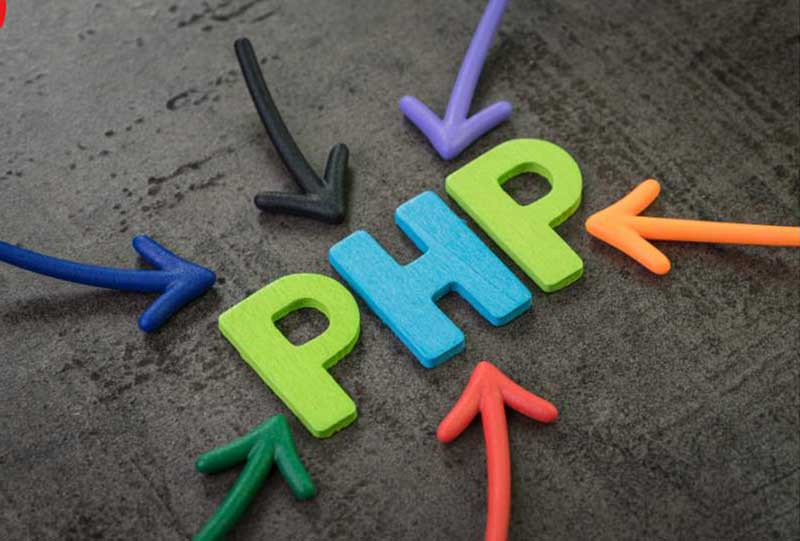Introduction to PHP and MySQL
PHP (Hypertext Preprocessor) and MySQL are two of the most widely used technologies in the world of web development. Together, they form a powerful backend development stack that has driven the success of countless websites and applications. While PHP is a server-side scripting language designed for web development, MySQL is a relational database management system (RDBMS) used to manage the data behind the scenes.
This article explores PHP and MySQL in-depth, their frameworks, the future of these technologies, their market impact, business benefits, learning paths, scalability, pricing, and more. We will also compare PHP and MySQL with other technologies in the field and discuss the salary range for PHP developers and its long-term viability.
What is PHP?
PHP is a widely-used open-source server-side scripting language designed primarily for web development. It was created by Danish-Canadian programmer Rasmus Lerdorf in 1993 and has evolved over the years to become one of the most important languages in the web development ecosystem.
Core Features of PHP
- Open-source: PHP is free to use, with its source code available for modification.
- Server-side scripting: PHP scripts are executed on the server, and the output is sent to the client as plain HTML.
- Cross-platform compatibility: PHP is supported by various operating systems, including Linux, Windows, and macOS.
- Database connectivity: PHP has built-in support for connecting to databases, particularly MySQL, making it ideal for database-driven websites.
- Extensive support for frameworks and libraries: Numerous frameworks like Laravel, Symfony, and CodeIgniter are built on top of PHP, streamlining the development process.
PHP’s Role in Web Development
PHP is used for server-side scripting, meaning it can handle tasks such as:
- User authentication and authorization
- Sending and receiving data to and from a database
- Handling form submissions
- Managing sessions and cookies
- Building dynamic websites and web applications
With its ability to embed HTML code, interact with databases, and run on multiple platforms, PHP is a key component of many content management systems (CMS), such as WordPress, Drupal, and Joomla.
What is MySQL?
MySQL is an open-source relational database management system (RDBMS) developed by Oracle Corporation. It is the most popular database used in web applications, primarily because of its ease of use, scalability, and compatibility with PHP.
Core Features of MySQL
- Open-source: Like PHP, MySQL is an open-source database that is free to use and modify.
- High-performance: MySQL is optimized for high-speed performance, which is essential for large-scale applications.
- Structured Query Language (SQL): MySQL uses SQL for querying and managing data, which makes it easy to interact with for anyone familiar with database management.
- Scalability: MySQL can handle large amounts of data and support millions of users simultaneously.
- Replication and Backups: MySQL offers replication features for data redundancy and high availability, making it reliable for enterprise applications.
Role of MySQL in Web Development
MySQL is commonly used in conjunction with PHP for handling data on websites. Its role includes:
- Storing website data: MySQL stores all the data used by a website, from user information to articles and product listings.
- Performing queries: Developers can write SQL queries to retrieve, update, delete, or insert data into the database.
- Managing relationships: MySQL allows developers to define relationships between different pieces of data, which is essential for complex web applications.
PHP Frameworks
PHP frameworks are collections of pre-written code that developers can use to streamline their development process. These frameworks provide reusable components for common tasks such as routing, validation, and database interaction.
Popular PHP Frameworks
- Laravel:
- Laravel is one of the most popular and modern PHP frameworks. It emphasizes clean and elegant syntax while offering features like routing, authentication, migrations, and database ORM (Eloquent).
- Symfony:
- Symfony is another powerful framework that can be used for building complex, enterprise-level web applications. It is highly flexible and offers reusable components.
- CodeIgniter:
- CodeIgniter is a lightweight PHP framework that is easy to set up and ideal for beginners. It offers essential tools and a user-friendly development environment.
- CakePHP:
- CakePHP is known for rapid application development (RAD) and provides built-in features such as form validation, session management, and more.
- Zend Framework:
- Zend is an enterprise-level framework that offers a wide range of components for building secure, scalable web applications.
These frameworks help developers avoid writing repetitive code and allow for faster, more secure web application development.
Future of PHP and MySQL
Both PHP and MySQL have been around for over two decades, and despite the emergence of new technologies, they continue to be a dominant force in web development.
The Future of PHP
- Modernization: PHP has evolved significantly, and newer versions are continuously released, improving speed, security, and features. The PHP community is also moving towards adopting more modern features, such as asynchronous programming and better handling of APIs.
- Growing popularity in CMS: Platforms like WordPress, which is powered by PHP, are expected to continue to thrive. This means PHP will remain integral to many website management systems for years to come.
- Integration with emerging technologies: PHP will continue to integrate with other modern technologies like microservices, containerization (via Docker), and cloud platforms (such as AWS and Microsoft Azure).
The Future of MySQL
- Cloud-based databases: With the rise of cloud computing, MySQL will increasingly be used as a managed service on platforms like AWS RDS, Google Cloud SQL, and Microsoft Azure Database.
- Advanced features: The adoption of advanced features such as JSON data types and spatial data will help MySQL cater to modern web applications that require a flexible database structure.
- NoSQL integration: MySQL is also improving its NoSQL capabilities, which will enable it to handle non-relational data in addition to structured data.
Market Impact and Business Benefits
PHP’s Market Impact
PHP’s market impact is undeniable. According to W3Techs, over 78% of websites whose server-side programming language is known use PHP. It is deeply integrated into popular CMSs, e-commerce platforms, and custom web applications. Additionally, PHP powers major platforms like Facebook, WordPress, and Wikipedia.
Business Benefits:
- Cost-effective: Being open-source, PHP is free to use, making it an affordable solution for businesses, both large and small.
- Large talent pool: As one of the most popular web development languages, PHP developers are easy to find, and hiring costs are often lower than for other technologies.
- Community Support: The large PHP community offers a wealth of resources, tutorials, and plugins, ensuring businesses have support at every stage of development.
MySQL’s Market Impact
MySQL’s market impact is significant, especially considering it powers some of the largest websites and applications globally. It is often the default choice for web applications, particularly for content management systems.
Business Benefits:
- Scalability: MySQL’s high-performance and scalability make it suitable for applications of all sizes, from small blogs to large-scale e-commerce platforms.
- Cost-effective: Like PHP, MySQL is open-source and free to use, which makes it ideal for businesses looking to minimize infrastructure costs.
- Reliability and Security: With robust security features and active development, MySQL remains a trusted choice for managing business-critical data.
Where and How to Learn PHP and MySQL
Where to Learn PHP and MySQL
- Online Courses: Platforms like Udemy, Coursera, and Codecademy offer comprehensive courses for beginners and intermediate learners.
- Documentation and Tutorials: The official PHP and MySQL documentation provides detailed guides and tutorials to help learners get started with both technologies.
- Community Forums and Meetups: Joining online communities like Stack Overflow or attending PHP/MySQL meetups can provide valuable insights and real-world experience.
How to Learn PHP and MySQL
To learn PHP and MySQL, start with the basics:
- Install PHP and MySQL: Set up a local development environment using tools like XAMPP or MAMP.
- Build Small Projects: Start by building simple PHP and MySQL-based applications like contact forms, blog systems, or to-do list apps.
- Practice SQL Queries: Learning SQL is essential for working with MySQL. Practice writing complex queries, and explore how MySQL handles joins, subqueries, and aggregate functions.
- Learn a Framework: Once you understand the basics, move on to learning a PHP framework like Laravel or Symfony.
Comparison with Other Technologies
When compared to other technologies like Node.js or Python with Django, PHP and MySQL have distinct advantages:
- PHP is more mature: PHP has been around for a long time and is deeply integrated into many major platforms.
- MySQL is a reliable database solution: While other databases like PostgreSQL or MongoDB are gaining popularity, MySQL remains a go-to choice for relational databases.
- Full-stack solutions: PHP and MySQL together offer a full-stack solution that is easy to implement and manage for most web development needs.
Salary Range and Career Outlook
PHP Developer Salary
As of 2024, the average salary for a PHP developer in the United States is around $75,000 per year. However, this can vary



